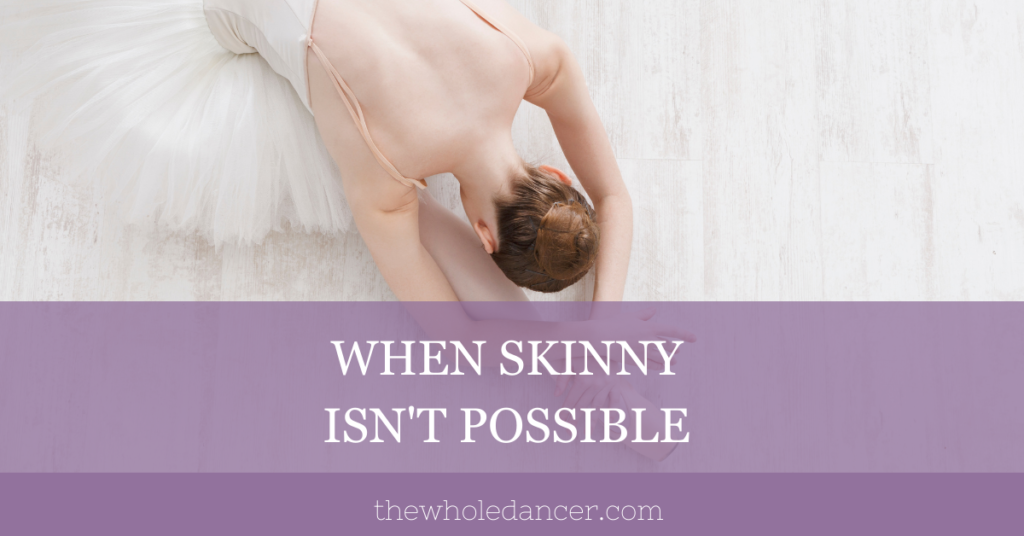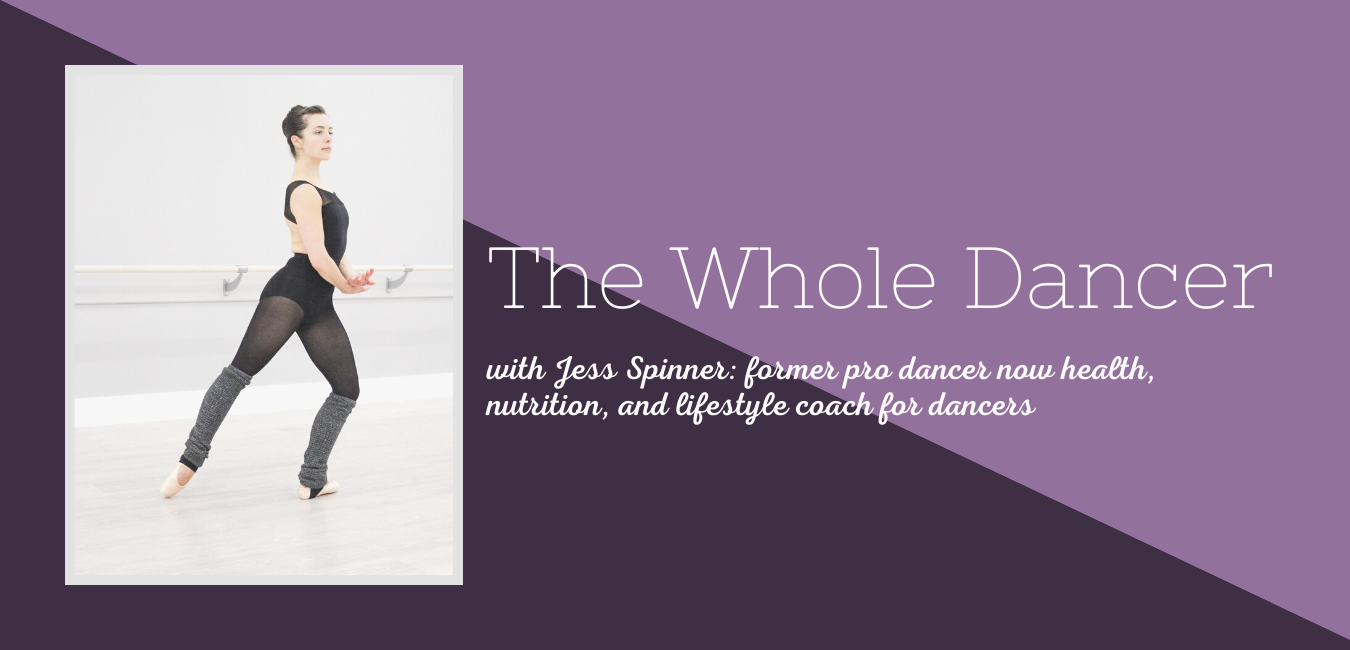When I was dancing and pursuing dance professionally, I wanted to be skinny. Of course, I had other goals and aspirations in dance, but for me, skinny was an overarching goal and a daily concern.
I thought that if I was skinnier, it would make me an instantly better dancer.
In my mind, skinny was the answer to all of my problems. It would help me get my next job, get cast in better roles, and my technique would instantly look better on a skinnier body.
Maybe you can relate to this romanticized view of “skinny.” It’s something I’ve heard over and over again from clients and dancers at varying stages of their careers. You’re brainwashed to believe that it’s a magic bullet of sorts. Just be smaller and you’ll be better. You’ll get the job. You’ll find “success,” and you’ll finally be happy and confident.
It’s time to take skinny off the pedestal. Changing your body at all costs without consideration for your health is a fast path to losing your love for dance, burning out, and potentially causing irreversible damage.

What happens when getting skinnier is your #1 goal in dance?
You might damage your relationship to food.
This possibility comes to dancers from all sides. Your peers might talk about restrictive eating patterns, your teachers might make off-handed comments about eating less, or you might watch TV or consume social media that sends the message you should eat less or a certain way.
Restrictive eating or borderline disordered eating can cause long-term damage to your relationship to food. It can make it harder to recognize hunger and fullness and create an environment of stress around meals or any food-centric gatherings.
You might cause harm to your body.
If you’re chronically underfueling, you’ll increase the likelihood of injury. Stress fractures are more likely if you’re not consuming enough food and are deficient in nutrients essential to bone health. The primary deficiencies we hear about are calcium and vitamin D as they’re closely connected to bone health, but there are other, lesser-known deficiencies to consider as well.
“These lesser known insufficiencies of magnesium, silicon, vitamin K, and boron are rarely explained to physicians although the more common insufficiencies of calcium, vitamin D and exercise are increasingly recognized as contributors to bone health. In addition to these essential nutrients, vitamin C, inositol and L-arginine have beneficial effects on bone health.”¹
Restrictive eating can also reduce the amount of “good bacteria” in your gut. This can make it harder for your body to digest food efficiently and can cause gas and bloating.
Your dancing might suffer.
If you don’t nourish your body, your dancing will suffer. It’s very easy to slip into a state of undernourishment when you dance for hours each day. Your body needs adequate fuel to recover from the physical stress and strain of dancing. Without adequate nutrition to support that recovery, you’re more likely to get injured, you’ll be weaker, and your immune system can suffer.
If you’re forced out of the studio to heal from injury or recover from illness, you might face challenges in achieving the technical improvements you desire. It’s all connected. Even if a thinner body helped you get a job, you’ll struggle to keep it if you’re not supporting your body with adequate nutrition.
It’s essential that you shift your thinking to prioritize what’s really necessary to support your best dancing.
Here are 7 ways to start the shift:
1. Put your health in position number ONE.
Before anything else, your health comes first. As a healthy dancer, you’ll have more energy, you’ll lower your risk for injury, and you’ll be able to sustain better moods. This will allow you to find more joy in your dancing.
2. Set intentions behind your body goals.
Acknowledge that being thinner is not going to make you an instantly better dancer. How would you like to feel in your body? How will that shifted way of feeling impact your dancing?
3. Work on increasing your confidence NOW.
Not only will this help you think of yourself in a more loving and supportive way, but that confidence will help you see that achieving your strongest and healthiest body is possible. A balanced path will help you get there.
4. Be realistic.
“Skinny” might not be in the cards for you. That’s OK. It doesn’t mean you can’t pursue dance, and it doesn’t count you out of the ballet world. You may not ever be as thin as the dancer standing next to you. We are all built differently, and what’s healthy for one person may be completely unhealthy for you.
5. Frame your goals in healthier ways.
Rather than saying, “I want/need to be thinner” or “I’d like to reach x weight by a certain date” say something like, “I want to attain the strongest, most beautiful version of my body that is going to support my dancing for a long and healthy career.”
6. Trust the process.
Throughout your life, your body shape and composition will be constantly evolving. You’ll discover a new way of eating that works wonders for you or certain mindset shifts will suddenly click.
7. Aim to be an expert on your body.
Restrictive eating is counterproductive. Copying how someone else eats is unlikely to lead to the desired result. What works best for you is unique to you. An easygoing attitude around food is going to allow you to experiment to figure out what works best for you.
A former participant in The Dancers’ Best Body Program put it beautifully when she said, “Having deep knowledge of my body and my dancing abilities will take me way farther than a ‘skinny look’ ever will.” Yup. Exactly this.
She went on to say, “I feel more energized, stronger, and like a better dancer, but I haven’t necessarily seen a massive change in my external appearance — yet I still look at this as a massive transformation and have gotten complimented from my teachers on it.”If you’re looking to get a jump start on shifting your approach to your body in dance, then take a look at The Dancers’ Best Body Program. One-on-one and self-study options are currently open, or you can sign up for the waitlist of the next group coaching round.
